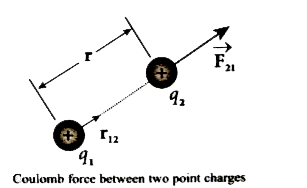Text Solution
Verified by Experts
|
Topper's Solved these Questions
ELECTROSTATICS
FULL MARKS|Exercise EXERCISES|15 VideosView PlaylistELECTROSTATICS
FULL MARKS|Exercise ADDITIONAL QUESTIONS SOLVED ( Multiple choice questions : )|57 VideosView PlaylistELECTROSTATICS
FULL MARKS|Exercise Textual Evaluation Solved (II. Short Answer Questions : )|21 VideosView PlaylistDUAL NATURE OF RADIATION AND MATTER
FULL MARKS|Exercise ADDITIONAL QUESTIONS -( ADDITIONAL NUMERICAL PROBLEMS : )|10 VideosView PlaylistMAGNETISM AND MAGNETIC EFFECTS OF ELECTRIC CURRENT
FULL MARKS|Exercise ADDITIONAL QUESTIONS SOLVED - NUMERICAL PROBLEMS :|4 VideosView Playlist
Similar Questions
Explore conceptually related problems
FULL MARKS-ELECTROSTATICS -Textual Evaluation Solved ( III. Long Answer Questions: )
- Discuss the basic properties of electric charges.
03:30
|
Play - Explain in detail Coulomb 's law and its various aspects.
10:31
|
Playing Now - Define Electric field .
01:50
|
Play - How do we determine the electric field due to a continuous charge dist...
07:03
|
Play - Calculate the electric field due to a dipole on its axial line and equ...
Text Solution
|
Play - Derive an expression for the torque experienced by a dipole due to a ...
Text Solution
|
Play - Derive an expression for electrostatic potential due to a point charge...
06:18
|
Play - Derive an expression for electrostatic potential due to an electric di...
05:25
|
Play - Obtain an expression for potential energy due to a collectrion of thre...
Text Solution
|
Play - Derive an expression for electrostatic potential energy of the dipole ...
04:37
|
Play - Obtain Gauss law from Coulomb 's law .
03:13
|
Play - Obtain the expression for electric field due to an infinitely long cha...
05:11
|
Play - Obtain the expression for electric field due to an charged infinite pl...
04:33
|
Play - Obtain the expression for electric field due to an uniformly charge sp...
07:23
|
Play - Discuss the various properties of conductors in electrostatic equilibr...
02:35
|
Play - Explain the process of electrostatic induction .
02:34
|
Play - Explain dielectrics in detail and how an electric field is induced ins...
02:08
|
Play - Obtain the expression for capacitance for capacitance for a parallel p...
02:48
|
Play - Obtain the expression for the energy stored in a parallel plate capaci...
12:57
|
Play - Explain in detail the effect of a dielectric placed in a parallel plat...
04:02
|
Play
